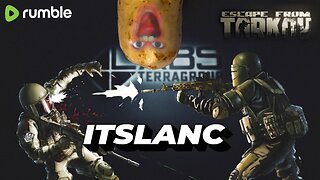Premium Only Content

Titans Unleashed: The Iran-Israel Military Showdown
#IranVsIsrael #MilitaryMight #DefenseDebate #GlobalSecurity #TechVsForce #StrategicEdge #Iran #israel
The debate on military might between Iran and Israel is complex. On paper, Iran boasts enormous manpower and a vast territory, while Israel leverages state-of-the-art technology and focused training. Both nations structure their forces around different strategic doctrines, making comparisons a nuanced affair.
In sheer numbers, Iran fields a massive force with over 600,000 active personnel and a large reserve pool—a natural consequence of its population of nearly 88 million. Israel, by contrast, operates with around 170,000 active soldiers, preferring a leaner, highly trained military elite that maximizes efficiency over quantity.
Defense spending further highlights the divergence. Israel spends significantly more per capita on defense—a reflection of its commitment to advanced weapons systems, including nuclear capabilities and superior air power. Iran’s resources are partially bolstered by unconventional funding through its state-controlled economic networks, despite challenges posed by international sanctions.
Air superiority is a key factor. Israel’s air force, equipped with cutting-edge fighter jets and a robust domestic defense industry, ensures rapid technological responses to threats. Iran, meanwhile, has been building an arsenal of ballistic and cruise missiles alongside a growing fleet of UAVs, though much of its equipment remains a patchwork from diverse origins.
When it comes to land power, numbers tell only part of the story. Iran’s tank fleet slightly outnumbers Israel’s, yet Israel’s focus on quality, maintenance, and network-centric warfare means that its armored units often outperform their numerical counterparts. The real debate centers on how these assets are integrated into a larger strategic framework.
Beyond hardware, the tactics diverge drastically. Iran frequently employs proxies and hybrid strategies, leveraging irregular warfare to extend its reach. Israel, on the other hand, banks on precision strikes, electronic warfare, and extensive intelligence to neutralize threats before they fully materialize—shaping the battlefield through innovation rather than sheer volume.
Recent military engagements have underscored these differences. High-profile strikes have seen Israel targeting key Iranian command structures and nuclear-linked facilities, actions that reveal a willingness to accept short-term escalations for long-term strategic gains. Iran’s response, often involving mass drone deployments and missile salvoes, reflects its doctrine of asymmetric warfare.
In the end, determining “who is stronger” depends heavily on context. While Iran’s numerical advantages and missile capabilities provide it with a broad-based deterrent, Israel’s technological edge, focused training, and integrated defense systems position it as a formidable counterbalance. The true strength lies in how each leverages its unique assets to secure national interests in a turbulent region.
-
 54:47
54:47
Side Scrollers Podcast
1 day agoSide Scroller Presents KING OF THE KART | MASSIVE MARIO KART TOURNAMENT
114K6 -
 2:39:02
2:39:02
The Pascal Show
16 hours ago $0.76 earned'HE'S THE DEVIL!' Former Mother In Law Breaks Silence On Jake Haro & Emmanuel Haro Case
6.35K1 -
 4:47:50
4:47:50
The Why Files
2 days agoCOMPILATION: UFOs and Aliens Vol.2 | They are NOT our friends
46.1K39 -
 5:30:10
5:30:10
SpartakusLIVE
10 hours ago#1 Verdansk Sniper gets HACCUSATIONS because of INSANE Headshots
51.5K4 -
 46:18
46:18
SB Mowing
2 days agoShe was LOSING HOPE but this SURPRISE CHANGED EVERYTHING
37K42 -
 10:00:10
10:00:10
ItsLancOfficial
10 hours agoWE LIVE 🔴WE LIVE 🔴 SUNDAY SUNDAYS!!!!!!! TARKOV
31.7K1 -
 4:09:32
4:09:32
EricJohnPizzaArtist
6 days agoAwesome Sauce PIZZA ART LIVE Ep. #59: Are You Ready for some FOOTBALL with GameOn!
35.7K7 -
 1:21:43
1:21:43
Jake Shields' Fight Back Podcast
16 hours agoJake Shields and Paul Miller!
69.5K125 -
 1:20:41
1:20:41
TRAGIKxGHOST
7 hours agoTrying to get SCARED tonight! | Are You SCARED!? | Screams Beyond Midnight | Grab a Snack
24.9K2 -
 5:21:24
5:21:24
StuffCentral
9 hours agoI'm baaack (no you can't play with me.. unless you a healer)
25.5K5